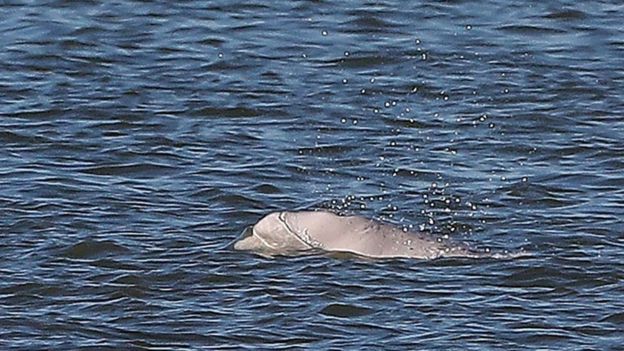Biodiversity is obviously biological diversity - the variety of life.
In order to live, organisms need a number of things:
Green plants need water and minerals from soil, carbon dioxide and oxygen from air, light, and a suitable temperature.
Animals need some of the same things, but more than anything they need plants; herbivores use them for food, and by proxy so do carnivores.
And they mostly need oxygen, which is a waste product fom plants. Plants also provide shelter for animals. But animals can have negative impact on plants, as well as on other animals.
All living organisms also need a place - a part of the environment - to provide all of these.
Individual organisms live in their own
habitat, alongside other individuals of the same type - the same
species - forming groups called
populations.
Other species have similar requirements, and they share some of the same area. There is
competition for resources within and between the different populations, which collectively make up a
community.
One animal species has much more impact on other species and the environment than any other - and much of that impact is negative.
Hunting, habitat loss and climate change are the main factors affecting biodiversity these days.
Five mass extinctions are recognised in the distant past.
Most are thought to have been caused by rapid climate change.
Biodiversity is a topic that is often in the news these days - but this is mostly due to
reduction in numbers within animal populations, and extinction of species.
Speciation - the formation of new species from existing populations - is rather a rare event.
The slippery slope to extinction
The IUCN Red List uses these Categories and Criteria for classifying species at high risk of global extinction.
Least Concern,
Near Threatened,
Vulnerable,
Endangered,
Critically Endangered,
Extinct in the Wild
and Extinct.
Friends of Biodiversity

The
International Union for Conservation of Nature's Red List of Threatened Species "has evolved to become the world's most comprehensive information source on the global conservation status of animal, fungi and plant species.
The IUCN Red List is a critical indicator of the health of the world's biodiversity."
The most recent report states that more than 26,000 species are threatened with extinction - more than 27% of all assessed species.

The
World Wildlife Fund (WWF) has a "mission to conserve nature and reduce the most pressing threats to the diversity of life on Earth".
And the
WWF-UK's mission is "to create a world where people and wildlife can thrive together".

The
Center for Biological Diversity is another organisation with a campaigning attitude and some snappy slogans:
"Our Mission: Saving Life on Earth"
"Because diversity has intrinsic value, and because its loss impoverishes society, we work to secure a future for all species, great and small, hovering on the brink of extinction."
I particularly like their free
endangered species ringtones.
Enemies of biodiversity
Man
Humans kill animals for a number of reasons. When populations of food species are expected to recover, this is described as sustainable.
However animals get killed on a large scale for other reasons which cannot be justified except greed.
The
African Elephant Loxodonta africana is currently categorised as Vulnerable.
Africa's total elephant population was around 415,000 in 2016, a decline of around 111,000 over the previous decade. This dramatic drop in numbers was almost entirely due to poaching to provide ivory.
Monoculture
Monoculture is growing one species of plant in an area, to the exclusion of other plants and the animals which would be at home there.
Large areas of tropical rain forest which are havens of biodiversity have been cleared to make space to grow oil palms.
Palm oil plantations in Borneo and Sumatra have been blamed for destruction of forests in which Orangutans live.
 The International Union for Conservation of Nature's Red List of Threatened Species "has evolved to become the world's most comprehensive information source on the global conservation status of animal, fungi and plant species.
The International Union for Conservation of Nature's Red List of Threatened Species "has evolved to become the world's most comprehensive information source on the global conservation status of animal, fungi and plant species.

 The Center for Biological Diversity is another organisation with a campaigning attitude and some snappy slogans:
The Center for Biological Diversity is another organisation with a campaigning attitude and some snappy slogans:



 80x79/720 gives 8.78 - a reasonably high value
80x79/720 gives 8.78 - a reasonably high value
 In this example two species are cancelled out by the n-1 term, so the value is lower (4.77).
In this example two species are cancelled out by the n-1 term, so the value is lower (4.77).
 In this case there is minimum diversity and n=N so the index turns out as a fraction of 1/1
In this case there is minimum diversity and n=N so the index turns out as a fraction of 1/1
 Just 2 marks for this one - or 1 for either numerator (24180 or 156 x 155)
or denominator (9014)
Just 2 marks for this one - or 1 for either numerator (24180 or 156 x 155)
or denominator (9014)


 This bunch of enthusiasts are zooming in on an Eastern Crowned Warbler seen in the UK for the first time
This bunch of enthusiasts are zooming in on an Eastern Crowned Warbler seen in the UK for the first time
 Beluga whales belong in Arctic waters.
Beluga whales belong in Arctic waters.  Mixed woodland
Mixed woodland
 A wheatfield - with a little biodiversity in the distance
A wheatfield - with a little biodiversity in the distance